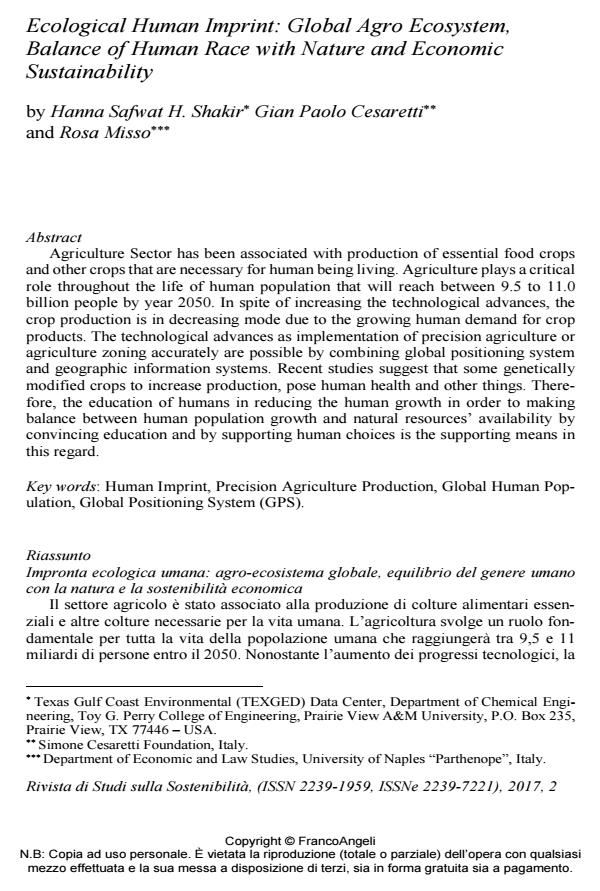Ecological Human Imprint: Global Agro Ecosystem, Balance of Human Race with Nature and Economic Sustainability
Journal title RIVISTA DI STUDI SULLA SOSTENIBILITA'
Author/s Hanna Safwat H. Shakir, Gian Paolo Cesaretti, Rosa Misso
Publishing Year 2017 Issue 2017/2
Language English Pages 24 P. 7-30 File size 256 KB
DOI 10.3280/RISS2017-002002
DOI is like a bar code for intellectual property: to have more infomation
click here
Below, you can see the article first page
If you want to buy this article in PDF format, you can do it, following the instructions to buy download credits

FrancoAngeli is member of Publishers International Linking Association, Inc (PILA), a not-for-profit association which run the CrossRef service enabling links to and from online scholarly content.
Agriculture Sector has been associated with production of essential food crops and other crops that are necessary for human being living. Agriculture plays a critical role throughout the life of human population that will reach between 9.5 to 11.0 billion people by year 2050. In spite of increasing the technological advances, the crop production is in decreasing mode due to the growing human demand for crop products. The technological advances as implementation of precision agriculture or agriculture zoning accurately are possible by combining global positioning system and geographic information systems. Recent studies suggest that some genetically modified crops to increase production, pose human health and other things. Therefore, the education of humans in reducing the human growth in order to making balance between human population growth and natural resources’ availability by convincing education and by supporting human choices is the supporting means in this regard.
Keywords: Human Imprint, Precision Agriculture Production, Global Human Population, Global Positioning System (GPS).
- Ecological human imprint: Agroecosystem in Egypt analysis and perspective Safwat H. Shakir Hanna, Gian Paolo Cesaretti, in RIVISTA DI STUDI SULLA SOSTENIBILITA' 2/2023 pp.41
DOI: 10.3280/RISS2022-002004
Hanna Safwat H. Shakir, Gian Paolo Cesaretti, Rosa Misso, Ecological Human Imprint: Global Agro Ecosystem, Balance of Human Race with Nature and Economic Sustainability in "RIVISTA DI STUDI SULLA SOSTENIBILITA'" 2/2017, pp 7-30, DOI: 10.3280/RISS2017-002002